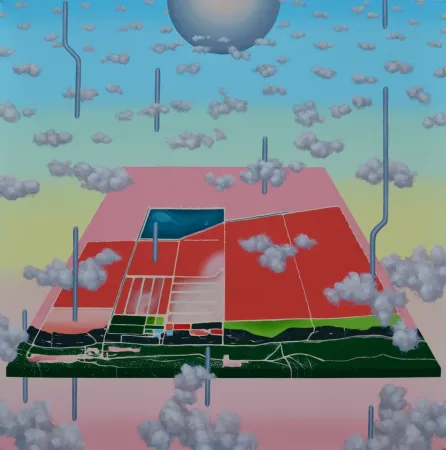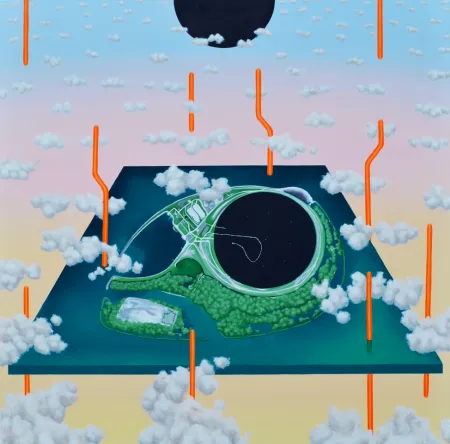I began painting about three years into my PhD program out of a frustration. I was working on an evaluation of agricultural nonpoint-source water pollution in Minnesota in search of appropriate land-management solutions. With the view that environmental problems are inherently social problems, this work was conducted through a stakeholder-engagement process to reflect multiple social, economic, and environmental perspectives into our investigation. Forming a comprehensive understanding of environmental problems and building trust take time—a lot of time. We met regularly with the stakeholders, including farmers, regulatory agencies, and non-governmental organizations over the course of five years. In the midst of this process, I felt as if nothing was getting done: the landscape simulation model I was building required constant revision with every new insight or concern voiced by the stakeholders, and I hadn’t even begun writing a paper about my research yet!
Painting brought me great satisfaction because the progress I was making was plainly visible all throughout the process, whereas the scientific process can be convoluted and the outcomes are not always apparent. I didn’t know at that time, but solving problems, especially complex environmental problems, requires creativity. Creativity is propelled by some combination of curiosity and imagination. My scientific training has taught me to be curious. The drive to investigate and analyze is at the core of any serious scientist, and as Thomas Kuhn observed, human curiosity is the common denominator of all scientific revolution. At the same time, humans are endowed with the ability to imagine with an extraordinary complexity unknown to other organisms. As science provides a system for pursuing human curiosity, art fosters our ability to imagine. Painting certainly has refined my imaginative skills; with every brush stroke, I envision new exciting possibilities on my canvas. Solving the complex problem of mitigating agricultural water pollution in Minnesota compelled us to seek novel approaches to bring in multiple perspectives and find a consensus solution among all stakeholders. The project wouldn’t have been successful without the open-mindedness and creativity of all participants seeking innovative paths to our mutual solution.
My work as a scientist takes place in the interface between science and policy, requiring creativity and collaborative skills to bridge the fields and define actionable goals for conservation and protection of our environment. I know this clearly now since graduating from under the wings of my PhD advisors, who taught me to be a critical thinker, and after having a year and a half of self-discovery as a SESYNC postdoctoral fellow. I also learned to accept my hybrid identity in the boundaries of multiple disciplines and found the vocabulary to utilize this condition from reading Primo Levi, who was a chemist and a writer, another hybrid being. So, to expand my reach of conservation efforts, I began using my paintings to tell stories about human relations with the natural world. I hope to motivate my audience to broaden their perspective with an inquiry into the human actions on Earth and their consequences. With this broader perspective, our understanding of the world may become more comprehensive, and with a more comprehensive understanding of our place in the world, we may change the way we exist on Earth. Primo Levi once said that as more people become aware that each of us is a small particle of the merit belonging to the human species, the less difficult and long it will be for humanity to progress toward justice and peace. In the same lineage of logic, as more people become aware that each of us is an even smaller particle of the miracle that we call Earth, less difficult and long it will be for humanity to progress toward a sustainable future.
Se Jong Cho was recently featured in the Baltimore Museum of Art’s 2020 vision campaign, which shed much deserved light on the achievements of female-identifying artists. http://artbma.org/2020/#chapterartists

